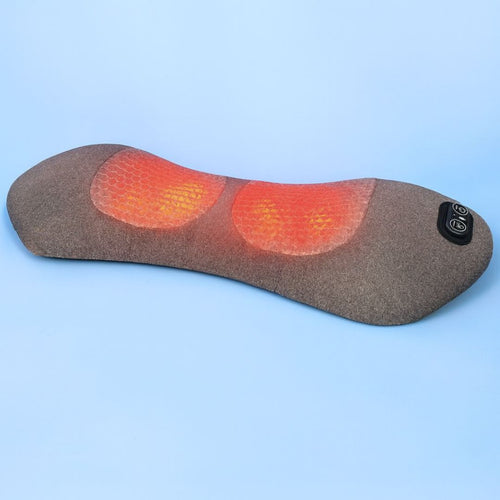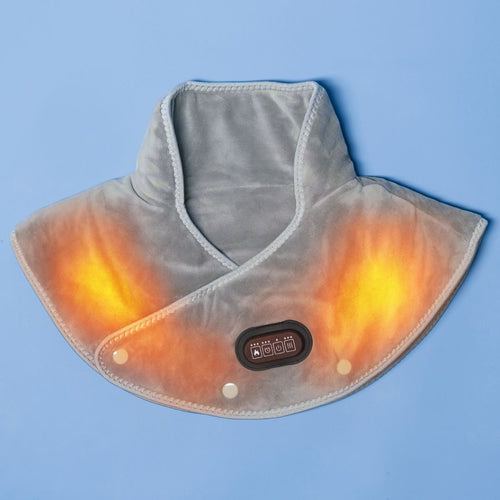How to Fix Forward Head Posture at Home, Fast
By Holly Grace Callis | Published on August 11th, 2025

You notice your neck jutting forward when you scroll on your phone or lean over your laptop. That slight forward tilt seems harmless until neck stiffness, tension headaches, or shoulder pain start piling on.
Forward head posture (often called "tech neck") affects most people these days. According to researchers at the University of Miami, between 27 and 78% of people have their necks in a forward position within 24 hours. This causes continuous stress on the neck and shoulders.
The good news? With the right stretches, posture cues, and at-home support, you can correct it quickly.
In this guide, you'll discover why forward head posture happens, what you can do right now to reverse it, and which tools help make good posture effortless.
Why Forward Head Posture Happens

Forward head posture doesn't develop overnight. It's the result of daily habits that gradually shift your head away from its natural alignment over your shoulders.
Screen Time Pulls Your Head Forward
When you look down at your phone or crane your neck toward a computer screen, your head moves forward to get closer to what you're viewing. Do this for hours every day, and your body starts to think this position is normal. Your muscles adapt to hold your head in this forward position, even when you're not looking at a screen.
Muscle Imbalances Create the Problem
Forward head posture happens when certain muscles become tight while others become weak. The deep neck flexors, which are responsible for keeping your head balanced over your shoulders, often become weak from lack of use.
Meanwhile, the muscles at the back of your neck and the top of your shoulders become tight and overworked as they try to support your head's weight in this awkward position.
Your chest muscles also play a role. Hours of hunching over devices cause your chest to tighten, which pulls your shoulders forward and makes it even harder to keep your head in proper alignment.
Lack of Awareness Makes It Worse
Most people don't realize their posture has shifted until pain or stiffness sets in. Without regular posture checks throughout the day, bad habits compound. You might start the morning with decent alignment, but by afternoon, you're back to jutting your head forward without even noticing.
Poor sleep posture can also contribute to the problem. Sleeping on your stomach or using pillows that don't support your neck's natural curve can leave you starting each day with your head already out of alignment.
Easy Fixes You Can Start at Home
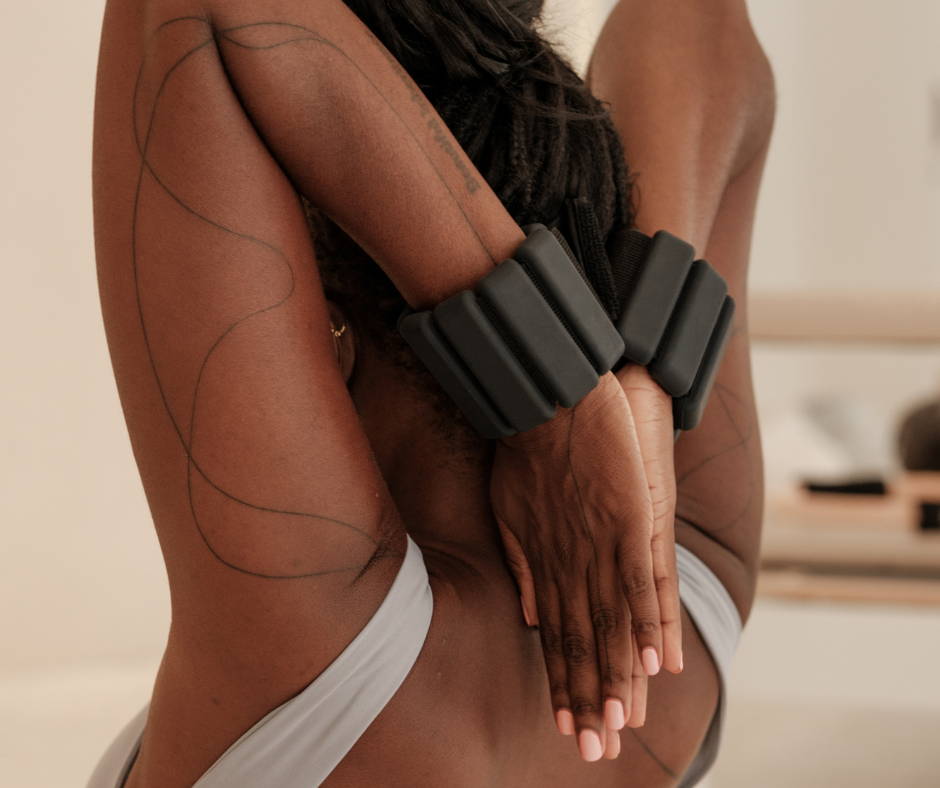
The beauty of correcting forward head posture is that you don't need expensive equipment or complicated routines. Simple, targeted exercises and smart positioning can start reversing the problem immediately.
1. Strengthen Your Deep Neck Flexors with Chin Tucks
Chin tucks are one of the most effective exercises for correcting forward head posture because they target the deep neck flexors that have likely become weak.
Here's how to do them:
-Sit or stand with your back straight
-Gently pull your chin back toward your neck, creating a double chin effect.
-You should feel a stretch at the base of your skull and the back of your neck.
-Hold for 5 seconds, then release.
The movement should be subtle. Think about lengthening the back of your neck as you perform the movement.
Aim for 3 sets of 10 repetitions, three times throughout your day. You can do these at your desk, in the car, or while watching TV. The key is consistency.
2. Open Your Chest and Release Your Upper Traps
Forward head posture creates tightness in your chest and upper shoulder muscles. Addressing this tightness is important for lasting posture improvement. Here are two exercises to do just that:
Doorway Chest Stretch
1. Stand in a doorway with your forearm against the frame, elbow at 90 degrees.
2. Step forward gently until you feel a stretch across your chest and front shoulder.
3. Hold for 30 seconds, then switch arms.
Upper Trap Release
1. Sit or stand tall.
2. Gently tilt your head to one side, bringing your ear toward your shoulder.
3. Use your hand to apply gentle pressure for a deeper stretch.
4. Hold for 30 seconds, then repeat on the other side.
Perform both stretches twice daily, ideally in the morning and evening. You can also do them during work breaks if you spend long hours at a desk.
3. Adjust Your Screen to Eye Level
One of the simplest ways to prevent forward head posture is to bring your screens up to meet your eyes instead of dropping your head down to look at them.
For computer work, your monitor should be positioned so that the top of the screen is at or slightly below eye level. If you use a laptop, consider using an external keyboard and mouse so you can raise the screen without compromising your arm position.
For phone use, try to hold your device higher rather than looking down at it in your lap. Even raising your phone a few inches can significantly reduce the strain on your neck.
This change alone can prevent your posture from getting worse throughout the day and give your neck muscles a chance to relax into better alignment.
4. Support Your Neck While You Sleep
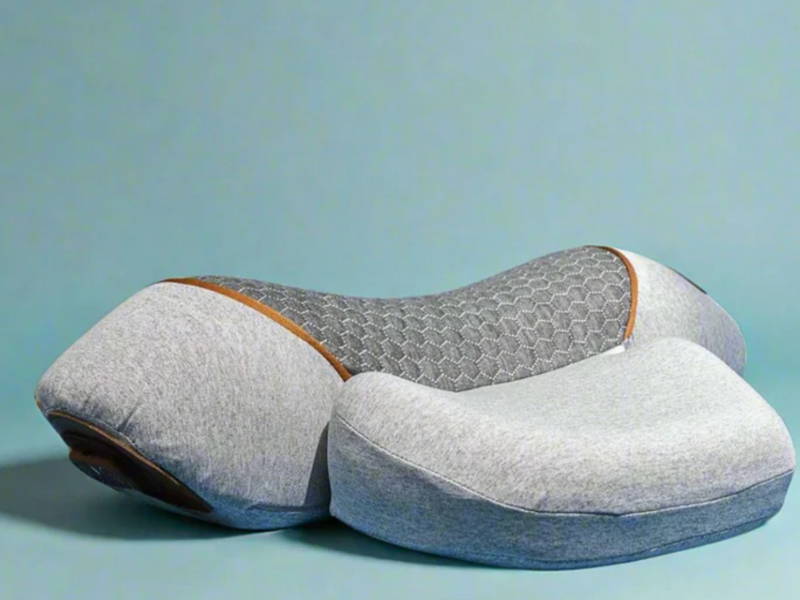
Your pillow plays a huge role in maintaining proper neck alignment overnight. The wrong pillow can undo the progress you make during the day.
A cervical support pillow like the Thera Pillow is designed to maintain your neck's natural curve while you sleep. Unlike flat pillows that can cause your head to tilt forward or back, a properly designed cervical pillow supports the space between your neck and the mattress.
This support helps prevent your head from drifting into a forward posture while you sleep and can reduce morning stiffness. Many people notice less neck tension and fewer headaches after switching to proper sleep support.
If you're a side sleeper, make sure your pillow fills the space between your shoulder and head completely. Back sleepers should look for a pillow that supports the neck without pushing the head too far forward.
5. Create Posture Awareness Throughout Your Day
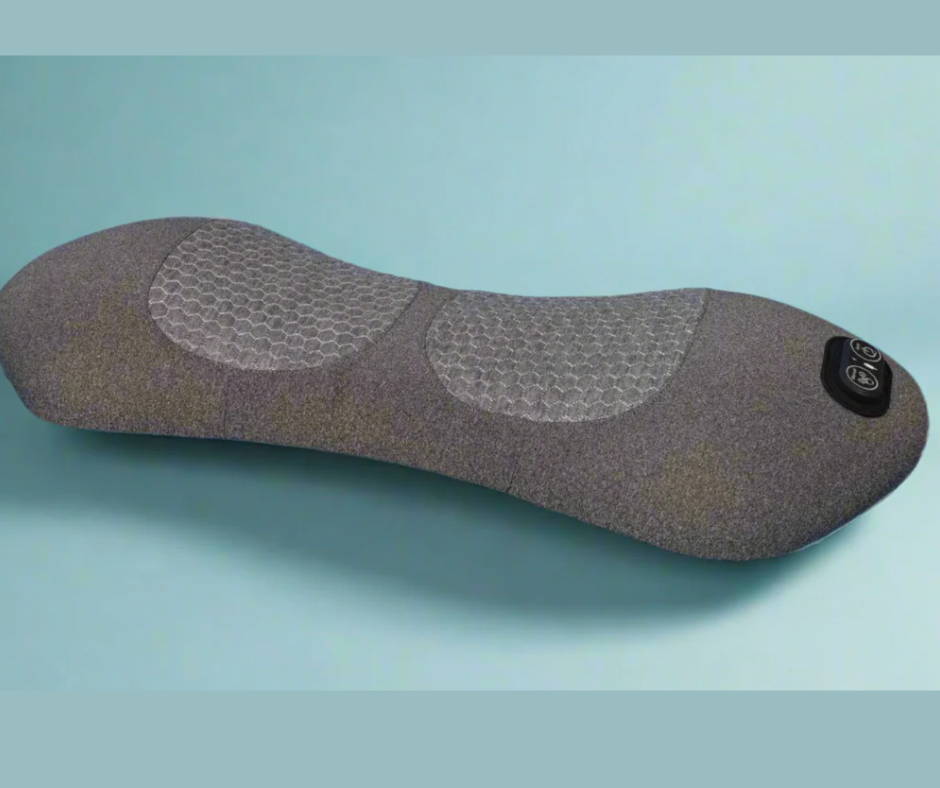
Building better posture habits requires consistent reminders to check and correct your alignment.
Set hourly reminders on your phone to do a quick posture check. When the alarm goes off, notice where your head is positioned and gently draw it back over your shoulders if needed.
For additional support during long work sessions, consider using a posture support tool like the Thera Back. This type of gentle reminder device helps keep your shoulders back and chest open, making it easier to maintain proper head alignment without constant conscious effort.
The goal is to make good posture feel natural rather than forced. With consistent practice and the right support, maintaining proper alignment becomes automatic.
6. Strengthen Your Upper Back
While stretching tight muscles is important, strengthening the weak muscles that support good posture is equally valuable for long-term improvement. Here are two great exercises
Wall Angels
1. Stand with your back against a wall.
2. Raise your arms into a "goal post" position, with your upper arms parallel to the floor.
3. Slowly slide your arms up and down the wall while keeping contact with the surface.
This exercise strengthens the muscles between your shoulder blades.
Prone Y Raises
1. Lie face down on your bed or floor.
2. Raise your arms overhead in a Y shape, lifting them off the ground.
3. Hold for 2-3 seconds, then lower.
This targets the lower trapezius muscles that help pull your shoulders back.
Start with 2 sets of 10-15 repetitions for each exercise. You can do these in the evening while watching TV or as part of a quick morning routine.
7. Take Regular Movement Breaks
Staying in any position for too long, even good posture, can create stiffness and fatigue. Regular movement breaks help reset your posture and prevent muscles from getting stuck in problematic positions.
Every 30-45 minutes, stand up and move around for a few minutes. Do some gentle neck rolls, shoulder shrugs, or simply walk to another room. This gives your postural muscles a chance to reset and prevents the gradual drift into forward head posture that happens with prolonged sitting.
If you can't leave your workspace, even simple movements like looking around the room, rolling your shoulders, or doing a few chin tucks can help maintain better alignment.
When You'll Start to See Results
The timeline for improving forward head posture varies depending on how severe the problem is and how consistently you apply these fixes. Here’s a timeline:
Immediate Relief
Many people feel some improvement in neck tension and comfort within the first few days of starting chin tucks and proper screen positioning. Your muscles begin to relax as you reduce the constant strain of poor posture.
Noticeable Changes
With daily practice, most people see visible improvements in their head and shoulder alignment within 2-3 weeks. Photos taken from the side can help you track progress that might be hard to notice day by day.
Lasting Improvement
Significant, lasting changes typically develop over 6-12 weeks of consistent effort. This is when new posture habits become automatic and your muscles adapt to support better alignment naturally.
Reduced Pain
Tension headaches, neck stiffness, and shoulder pain often start improving within the first week or two. As your posture improves, the strain on these areas decreases, leading to less discomfort overall.
Remember that progress isn't always linear. You might have good days and challenging days, especially as you're building new habits. The key is consistency over perfection.
Keep the Habit Going
Fixing forward head posture requires combining multiple approaches for the best results. No single exercise or tool will solve the problem on its own.
Create a Daily Routine
Build your posture exercises into existing habits. Do chin tucks while brewing your morning coffee, stretch your chest during TV commercial breaks, or perform wall angels before bed.
Address Your Environment
Make your workspace and home setup work for good posture rather than against it. This includes proper screen height, supportive seating, and adequate lighting that doesn't cause you to crane your neck.
Use Supportive Tools Strategically
Products like the Thera Pillow for sleep and Thera Back for daytime support can make maintaining good posture easier while you build strength and awareness.
Track Your Progress
Take progress photos from the side or keep a simple log of how your neck feels each day. Seeing improvement over time helps maintain motivation during the habit-building phase.
Be Patient with Setbacks
Stressful days, illness, or busy periods might temporarily worsen your posture. Don't let these setbacks derail your progress. Simply return to your routine as soon as possible.
The goal is to make good posture feel natural and effortless. With time and consistency, maintaining proper head alignment becomes automatic, and you'll notice the difference in how you feel throughout the day.
Fixing forward head posture is possible. Start today with simple exercises, smart screen positioning, and supportive tools like the Thera Pillow and Thera Back, and feel the difference fast.
Start Fixing Your Posture Today
Forward head posture doesn't have to be permanent. With simple daily exercises, smart screen positioning, and the right support tools, you can start seeing improvements in just days.
The key is consistency, not perfection. Small changes throughout your day add up to significant improvements in how your neck feels and how you look.
Ready to stand taller and feel better? Explore products to fix your forward head posture at home.
FAQs About Fixing Forward Head Posture
Understanding the most common questions about forward head posture can help you approach the problem with realistic expectations and effective strategies.
What is the fastest way to fix forward head posture?
The fastest approach combines immediate changes with daily exercises. Start by adjusting your screen height to eye level, begin doing chin tucks throughout the day, and use a cervical support pillow at night. These three changes can provide noticeable relief within days while building the foundation for long-term improvement.
How long does it take to correct forward head posture?
With consistent daily effort, some people notice improvements in 1-2 weeks, though full correction may take a few months. The timeline depends on how long you've had the problem, how severe it is, and how consistently you apply corrective strategies. Mild cases caught early often improve faster than long-standing postural problems.
Can sleeping position affect forward head posture?
Yes, sleeping without neck support or on your stomach can worsen forward head posture. Stomach sleeping forces your head to turn to one side for hours, creating neck strain and asymmetry. Back or side sleeping with a supportive pillow that maintains your neck's natural curve is best for preventing overnight posture problems.
Is forward head posture permanent?
Forward head posture is usually reversible with proper posture training, daily stretches, and ergonomic support. While some severe cases that involve structural changes might not fully reverse, most posture-related forward head positioning improves significantly with consistent effort. The key is addressing both the tight muscles and weak muscles that contribute to the problem.
Can forward head posture cause headaches?
Yes, forward head posture commonly causes tension headaches. When your head moves forward, the muscles at the base of your skull and top of your neck work overtime to support its weight. This constant tension can trigger headaches, particularly at the back of the head and temples. Correcting your posture often reduces headache frequency and intensity.
Do I need special equipment to fix forward head posture?
While you can make significant improvements with exercises and posture awareness alone, supportive tools can make the process easier and more effective. A quality cervical pillow supports proper alignment during sleep, and gentle posture reminders can help build better habits during the day. These tools supplement, but don't replace, the need for regular corrective exercises.


